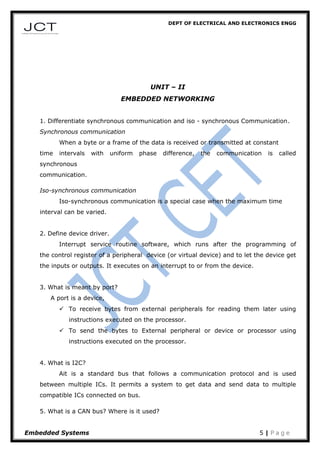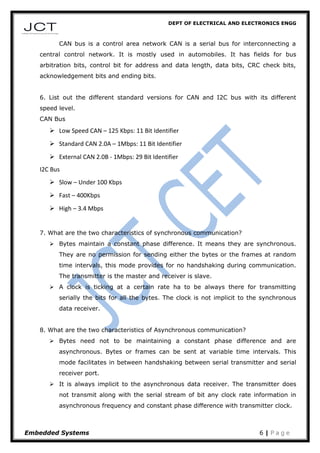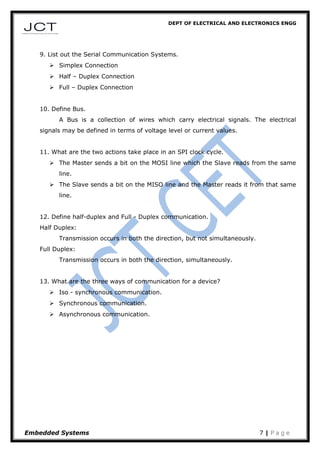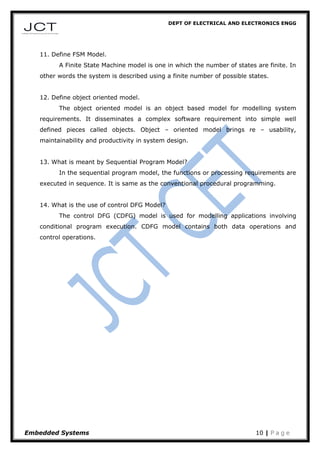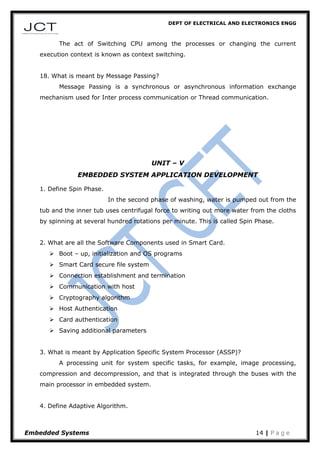This document contains a two mark question bank for the subject EE 6602 - Embedded Systems. It includes 15 questions related to introduction to embedded systems, embedded networking, and embedded firmware development environment. The questions cover topics such as defining embedded systems, challenges in designing embedded systems, ROM image, RAM role, watchdog timer, target system, real time clock, system clock, embedded system components, classifications, examples, DMA, device drivers, communication protocols and standards, and embedded product development life cycle phases.
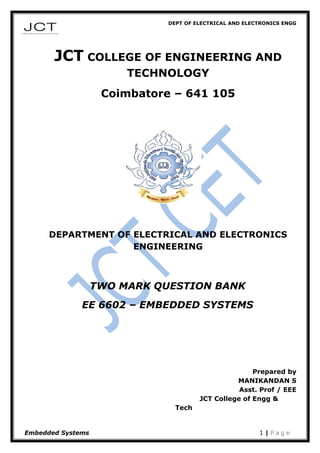
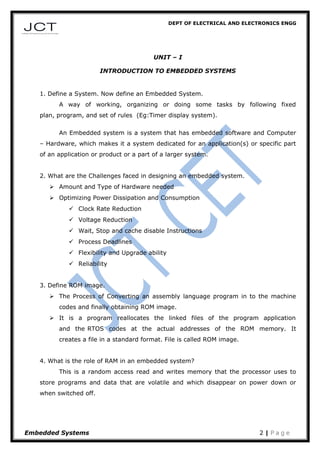
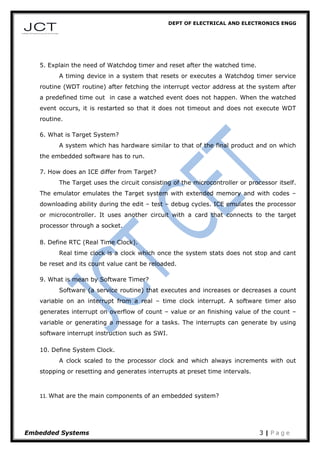
![DEPT OF ELECTRICAL AND ELECTRONICS ENGG
Microprocessor, memory (primary-RAM, ROM and secondary- hard disk),
input units (keyboard, mouse, scanner), output units (video monitor, printer),
networking units (Ethernet card, drivers), I/O units (modem).
12. What are the various classifications of embedded systems?
General purpose processor - microprocessor, microcontroller, embedded
processor, DSP, media processor.
ASSP-application specific system processor Multiprocessor system using
General purpose processor (GPP) and Application specific instruction
processor[ASIP].
GPP core or ASIP core or VLSI circuit.
13. Give some examples for Small and Medium scale embedded systems.
Small Scale:
Automatic chocolate vending machine, washing system, multitasking
Toys, keyboard controller, serial port controllers, CD drive and hard disk drive.
Medium Scale:
Computer networking router, internet appliances, entertainment
system, banking system, signal tracking system, communication system,
TCP/IP, DNA sequence and pattern storage memory card and DNA pattern
recognizer.
14. Define DMA and DMA Controller.
Direct Memory Access is a bus operation that allows reads and writes not
controlled by the CPU. A DMA transfer is controlled by a DMA controller, which
requests control of the bus from the CPU
A device that facilitates DMA transfer has a processing element is called as
DMA controller or DMAC.
15. Give some examples for small scale embedded systems.
Automatic chocolate vending machine, Washing system, Multitasking Toys,
Keyboard Controller, Serial Port Controllers, CD drive and hard disk drive.
Embedded Systems 4 | P a g e](https://image.slidesharecdn.com/embeddedtwomarkquestion-160130163023/85/Embedded-two-mark-question-4-320.jpg)
